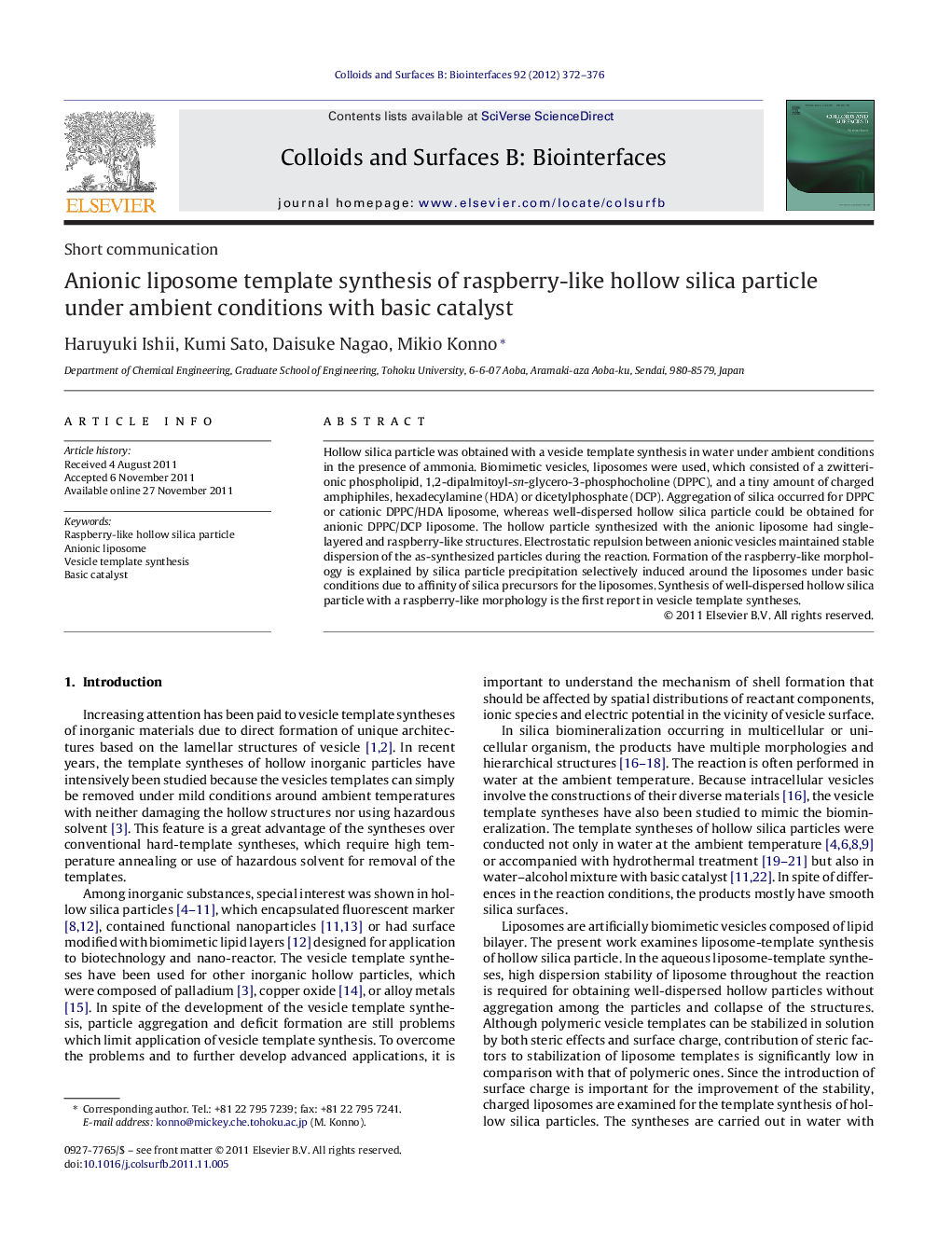| Article ID | Journal | Published Year | Pages | File Type |
|---|---|---|---|---|
| 600682 | Colloids and Surfaces B: Biointerfaces | 2012 | 5 Pages |
Hollow silica particle was obtained with a vesicle template synthesis in water under ambient conditions in the presence of ammonia. Biomimetic vesicles, liposomes were used, which consisted of a zwitterionic phospholipid, 1,2-dipalmitoyl-sn-glycero-3-phosphocholine (DPPC), and a tiny amount of charged amphiphiles, hexadecylamine (HDA) or dicetylphosphate (DCP). Aggregation of silica occurred for DPPC or cationic DPPC/HDA liposome, whereas well-dispersed hollow silica particle could be obtained for anionic DPPC/DCP liposome. The hollow particle synthesized with the anionic liposome had single-layered and raspberry-like structures. Electrostatic repulsion between anionic vesicles maintained stable dispersion of the as-synthesized particles during the reaction. Formation of the raspberry-like morphology is explained by silica particle precipitation selectively induced around the liposomes under basic conditions due to affinity of silica precursors for the liposomes. Synthesis of well-dispersed hollow silica particle with a raspberry-like morphology is the first report in vesicle template syntheses.
Graphical abstractFigure optionsDownload full-size imageDownload as PowerPoint slideHighlights► Raspberry-like hollow silica particle was synthesized with an anionic liposome template. ► The reaction was performed in water with basic catalyst at 35 °C. ► Dispersion stability of the anionic liposome was crucial for obtaining well-dispersed particles without aggregation between them. ► Base-catalyzed sol–gel reaction selectively induced around the liposome successfully formed silica shell with a raspberry-like morphology. ► The formation of raspberry-like hollow silica particle is the first report in vesicle template syntheses.
